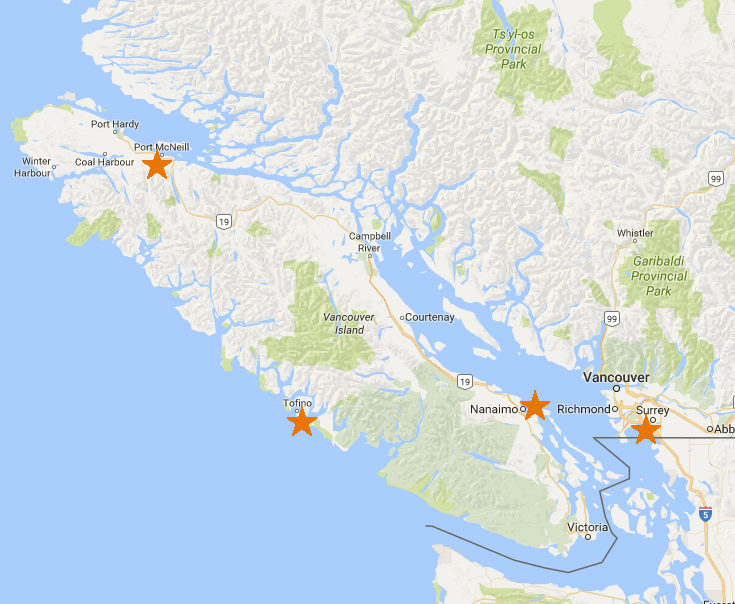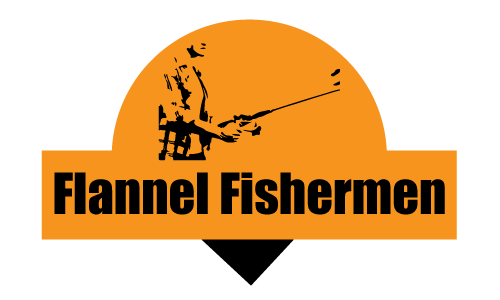Crab Fishing on Vancouver Island

Crabbing is the practice of using your own equipment and traps to catch some delicious crab, fresh out of the ocean. Crabbing is fairly popular on the mainland in Vancouver, but for a more authentic experience, you can also check out Vancouver Island.
#1 Best Seller Crab Fishing

Danielson CSNR Crab Snare, Multi, Small
While most people might think of the show “Deadliest Catch” when they hear about crab fishing, it actually requires a lot less work if you’re simply looking to have an enjoyable experience. You don’t need to go to Alaska and join a fishing crew, waking up at 3AM in the morning to set your traps and shove them over the edge of your boat in stormy seas, risking life and limb for 2 months at a time. You can experience the pleasure of catching a trap full of yummy crabs for much less effort, and here’s how.
Step 1 – Understand the Rules
First you need to know the rules surrounding what crabs you can keep, and which ones you can’t. You are not allowed to catch and keep any female Red Rock Crab, or female Dungeness crab. Females are easily distinguished from males by their wide abdomens, whereas males have narrow abdomens.
If you accidentally catch a female Red Rock or Dungeness crab, you must return them immediately and in the least harmful manner possible, or you might risk paying possible fines. The crab also has to be a certain size for you to be able to keep it. Dungeness crab smaller than 165mm across are considered undersized and need to be released immediately. Redrock crab smaller than 115mm across also need to be instantly released back into the wild.
To measure the crab, use a caliper or ruler and measure the crab in a straight line through the widest part of the shell from outside the points. The possession limit for all species of crab is twice the daily limit. It’s also important to keep in mind that having shelled or shucked crab in your possession outside of your home is illegal as well.
Once you know what crabs you can keep and the ones you can’t, you’ll need to get a valid tidal waters sport-fishing license. Once you have this, you need to scout the area where you intend to go crabbing, to make sure it is legal to crab fish in that area. One of the easiest ways to do this from home is to check a tidal waters fishing area map.
Step 2 – Think About Equipment
Equipment is huge when it comes to crabbing. As a recreational crab fisherman, a hoop net is a popular choice if you don’t have access to a trap/bait cage, but having a trap will greatly increase your chances of success (chicken is a good bait you can use in your bait cage, as the seals may go after salmon).
Nets and traps can be purchased online or at local bait shops, and while bait cages work the best, you may find it cheaper, simpler, and more fun to use a hoop net. For recreational crab fishermen, the best local places to buy crab nets or traps are Army & Navy stores (box traps usually go for about $20 each), or Walmart usually has some nets and traps to get you started, particularly the stores on the Island near the coast.
Be sure to have appropriate gloves to handle the crabs, and if you’re using a hand line, be sure to have a net handy. You will also want a bucket. Arming yourself with a bucket to store the crab, you can rest assured that you’re not going to lose any of your catches throughout the day. When learning to crab fish, it can be incredibly useful knowing some fishing knots. Couple all of this with some snacks and a good cooler and you should be good to go!
Best Crab Fishing 2021
Step 3 – Cooking the Crab
There are a few dangers when it comes to crab fishing. Crabs have sharp pincers that can hurt if they clamp onto you, and this is where your gloves will come in handy. If you don’t have gloves and you’re hesitant about handling the crab, a good pair of fishing pliers can help keep you “hands-free” and can also come in handy in lots of situation while you’re actually crabbing or fishing, too.
Once you’ve caught the crab, it’s also important that attentiveness is present at all points of crab fishing. For instance, if planning to eat the meat of the crab, be sure to clean it while it’s still alive or very shortly after. Failure to do so can result in poison being released throughout its body, which renders the meat inedible. Remember to do this at home however, because as stated above, it’s illegal to shuck crab outside of your home.
By taking all the important precautions into account, you can ensure that your experience is bound to be an unforgettable one. When crab fishing, it is always important to remember to take everything into consideration and to be respectful of the animal when every step is taken. By following the correct legislation and procedure then you can rest assured that an incredible experience is sure to be had.
Our Suggestions for Good Spots to Go Crab Fishing

British Columbia is a wonderful province that is easily accessible from the Pacific Northwest states. BC has an incredible amount to offer, from fun city life in Vancouver or Victoria, to exploring the vast wilderness in a unique tectonic setting, there truly is something for everyone. If you’re planning a trip, where you go crabbing will likely depend on other activities you have planned, but here are a few suggestions. Keep in mind these are just a few of many good options where you can try your luck.
White Rock
Mainland – about 30-45 minutes from downtown Vancouver
This is a quaint little coastal town known for its fishing industry, but it can become packed with tourists and locals during the day, particularly on the weekends. This is a really cool spot to go crabbing, especially if you have kids. You don’t even need a boat or a trap, but instead, you can simply wade out into the knee-deep tidal waters and catch crab by hand (there are usually tons of them in the area). We highly suggest getting there early, especially if it’s a weekend, as parking can be difficult to find later in the day.
Insider Tip: For the easiest way to catch the crab by hand, push down on its shell with your thumb so it can’t go anywhere. Then, position your finger towards toward the back of the crab and scoop it up from underneath. Simple, easy, and no pinches! Just remember, all the normal crabbing rules and regulations still apply.
Nanaimo
Southeast coast of Vancouver Island
Nanaimo is easily accessible from Vancouver by ferry, or also by seaplane (expensive!), and offers a comfortable mix of civilization and BC wilderness. Anywhere around the pier is usually a good bet, and placing traps will allow you to relax while you test your hand at crabbing. Wal-Mart is probably the best bet for traps in Nanaimo. If you plan on crabbing near the pier, we suggest getting down there early in the day, as it can be a fairly popular spot, especially for families.
Port McNeil
Northeast coast of Vancouver Island
Port McNeil is further out of the way and is a much smaller town, but if you’re doing a tour of the island, this can be a great spot to spend a day crabbing. For a good starting spot, try heading down to the marina and then straight out towards the peninsula.
Tofino
West coast of Vancouver Island
Tofino is one of the most famous spots to visit in BC, but given it’s on the West coast of Vancouver Island, it takes a little more effort to get there. If you’re touring the island, no worries, the drive will send you through mountains and lush rainforest, where you will eventually appear on a pristine coast with lots of beach access, and even some great surfing if you so desire!
Tofino is especially known for amazing fresh seafood, so if you don’t have much luck crabbing, you can still enjoy a great meal of crabs, oysters, mussels, fresh fish, and fresh local produce. Crabbing is popular in a variety of locations, with the best spots of the week depending on conditions. Checking out local resources before you make your way crabbing is recommended.
Conclusion
Vancouver Island is a great place to visit whether or not you plan on crab fishing. For the latter, it’s an excellent spot to try your luck at catching delicious meal in a sustainable manner. In fact, there are lots of opportunities to learn about the local wildlife and produce, as cooking has become a local forte for the area.
Even further, there is very a rich aboriginal history in BC and especially on Vancouver island, particularly the East coast of the island. While you’re visiting, listen to what anyone has to say, learn about the land and its history, learn about foraging for smaller seafood items and how people are fishing in a sustainable manner, and at the end of it all, you will come away with an all-around incredible experience!








